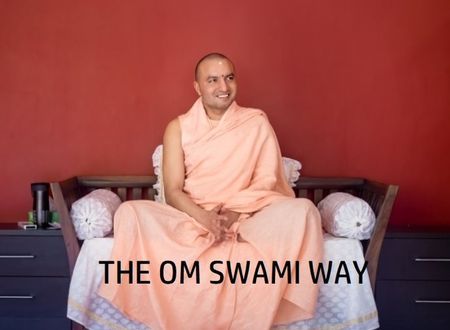This is a story of a middle-aged woman who struggled with childhood traumas causing chronic stress, anxiety, depression, and weight gain. However, her life pleasantly changed after discovering laughter yoga.
What is laughter yoga, and why does it matter?
Laughter yoga is an exercise including voluntary laughing, body movements, and close eye contact with playfulness in a group, usually coordinated by a facilitator. Some practitioners also use chanting.
Laughter yoga is a mindfulness practice. Dr. Madan Kataria popularized laughter yoga globally. According to him, laughter yoga has four components. They are clapping, breathing, childlike playfulness, and laughter yoga exercises.
Laughter yoga started in 1995 with four people who joined Dr. Kataria and his wife in a public park. Even though laughter yoga is relatively new, laughter has been an important human trait since our evolution.
Dr. Kataria has a laughter bank keeping many laugh-producing activities for his audience on social media. They are free and publicly available.
Laughter can contribute to physical and mental health. Volunteer laughter can initiate good-feeling neurotransmitters such as dopamine and epinephrine, wiring the brain for joy, happiness, and optimism.
Laughter yoga exercises can activate the cardiovascular system by oxygenating the body. These two critical factors can significantly reduce mental and physical stress.
An Overview of Scientific Studies for Laughter Therapies
Scientists in the last two decades have studied the benefits of laughing and laughter therapies. The focus of studies is primarily on stress, anxiety, and depression. I’d like to mention a few studies and reviews briefly.
I came across the studies of Dr. Lee S. Berk, a pioneering medical researcher studying the neuroendocrine and immune effects of positive emotions in the early 2000s.
His outstanding paper titled “The anticipation of a laughter eustress event modulates mood states prior to the actual humor experience” was published in the Society of Neuroscience Abstracts in 2001. You can watch Dr. Berk’s studies in this CNN interview.
This review paper informs that “laughter therapy is a non-invasive and non-pharmacological alternative treatment for stress and depression, representative cases that negatively influence mental health. In conclusion, laughter therapy is effective and scientifically supported as a single or adjuvant therapy.”
A 2020 meta-analysis reviewing randomized controlled clinical trials concluded that “Laughter therapy is an effective complementary method to decrease anxiety.”
This paper concluded that “laughter therapy is considered to be a useful, cost-effective, and easily accessible intervention that has positive effects on depression, insomnia, and sleep quality in the elderly.”
Laughter therapy was also studied for cancer patients. The goal of the treatment is to divert the attention of suffering patients to lighter thoughts.
For example, this paper titled “Laughter Therapy for Patients with Cancer” informs that “Laughter eases the mind, defuses tension among people, and has positive physiologic effects on patients.”
In 2013, I came across a study in Australia, where Gloria and I live. This research was conducted by Deakin University, measuring the effect of laughter yoga exercises on kidney patients on dialysis.
Since then, many studies have been conducted in different countries. So laughter yoga is not just a new age idea anymore. It has strong scientific backing.
A Brief Background to Gloria’s Life before Laughter Yoga
Gloria had a difficult childhood growing up in a low-income family. Unfortunately, her parents had alcohol and drug addiction and neglected her. She got confused and even traumatized in her early childhood.
Fortunately, another low-income yet loving family adopted her at age seven. Gloria worked in their small shop and served customers all day long. However, her foster parents died in an accident when she was 19 years old.
Therefore, Gloria had to look after herself. As she learned office and customer management skills from her parents, finding an office job was not difficult. She dedicated her life to the job to succeed and pay her bills.
She worked hard to gain financial freedom and neglected one of her fundamental needs. In her terms, she had never had fun for over a decade.
Gloria forgot to laugh as her brain operated in survival mode. She felt numb and empty inside most of the time and maintained her mood with antidepressants.
Laughing was a foreign behavior to her. However, one of her colleagues heard about laughter yoga and invited Gloria to the session.
Great things happened to Gloria after starting laughter yoga.
Gloria joined the group on a sunny Saturday afternoon in a beautiful park with trees, flowers, kangaroos, koalas, birds, and cheerful human beings.
Her heart instantly filled with joy when the group welcomed her with hugs and laughs. She felt euphoria first time in her life. The group included men and women of different ages, including children.
Most of the members were all from different ethnic groups, including aboriginals. The common goal was to laugh and enjoy pleasant moments.
Gloria and her friend decided to be a member of the group. She learned some voluntary laughing techniques and practiced them at home daily. In addition, they invited a few other friends. Then later, they created their own group.
Gloria started feeling terrific within a few months with daily laughter yoga exercises. Her self-confidence increased. Her friendship circle widened.
She said no one judged or gossiped. Everyone in the group was positive and uplifting. With support from her friends, Gloria’s anxiety and depressive thoughts disappeared.
Gloria was on a few stress, anxiety, and depression medication. But after a year, her family doctor reduced medication as her symptoms significantly disappeared. In addition, she lost substantial visceral fat, which gave her a defined body.
During the laughter yoga session, an affluent businesswoman offered a well-paying job to Gloria. She saved the money and purchased her own apartment, not paying rent anymore.
Furthermore, during laughter yoga sessions, Gloria met her sweetheart. They ended up getting married and having three beautiful kids.
She said laughter yoga brought her luck. Until starting laughter yoga, her life was dull and painful. She improved her health, made new friends, found a better job, lost weight, found her soulmate, and created a loving family.
Conclusions and Takeaways
Sometimes in our lives, solutions to complex problems hide in simple behavioral changes or gaining healthier habits.
Laughter can wire the brain for optimism, joy, and happiness by changing the neurochemicals in the brain. When we laugh brain releases endorphins via the pituitary gland.
Endorphins are like opioids. They relieve stress, anxiety, and pain. In addition, endorphins can help us experience euphoria, which is an altered state of mind. When the brain experiences such an altered state, many physiological and cognitive changes occur.
Laughter is an essential human need and can be done naturally. We don’t have to go to expensive shows to laugh. It is possible to laugh for no reason. That’s where laughter yoga plays a role.
By using simple laughter yoga techniques, we can start laughing by ourselves. However, it can be more effective with a group. In this story, I only mentioned one friend, but I met many more friends who gained numerous benefits from laughter yoga.
Laughter yoga can contribute to both physical and mental health. From my experience and observations, it is an effective mindfulness practice for stress management and anxiety reduction.
So, if we can deliberately turn laughter into a lifestyle habit, we can rewire our brains for happiness, joy, and optimism.
According to Gloria, if people feel stressed, lonely, anxious, hopeless, depressed, or overwhelmed, they might check local laughter yoga groups. They would be amazed by the results if they joined and kept doing it persistently.
If there are no groups, why not start one? It does not require any investment. Laughter yoga can be done anywhere, at home, in the garden, at the beach, or in parks.
Of course, some people might initially think the group might be crazy, but most likely, they will get impressed and join to reduce their stress. I saw some hesitant people in the beginning. However, I haven’t seen anyone who criticized laughter yoga in my circles yet.
Life is too short. What is the point of taking ourselves so seriously? With a bit of a sense of humor and leveraging laughter yoga techniques, we can enhance our daily joy and improve our relationships, health, and well-being.
Thank you for reading my perspectives. I wish you a healthy and happy life.
Readers might find the links to this story in the original version published on Medium.









Comments & Discussion
3 COMMENTS
Please login to read members' comments and participate in the discussion.